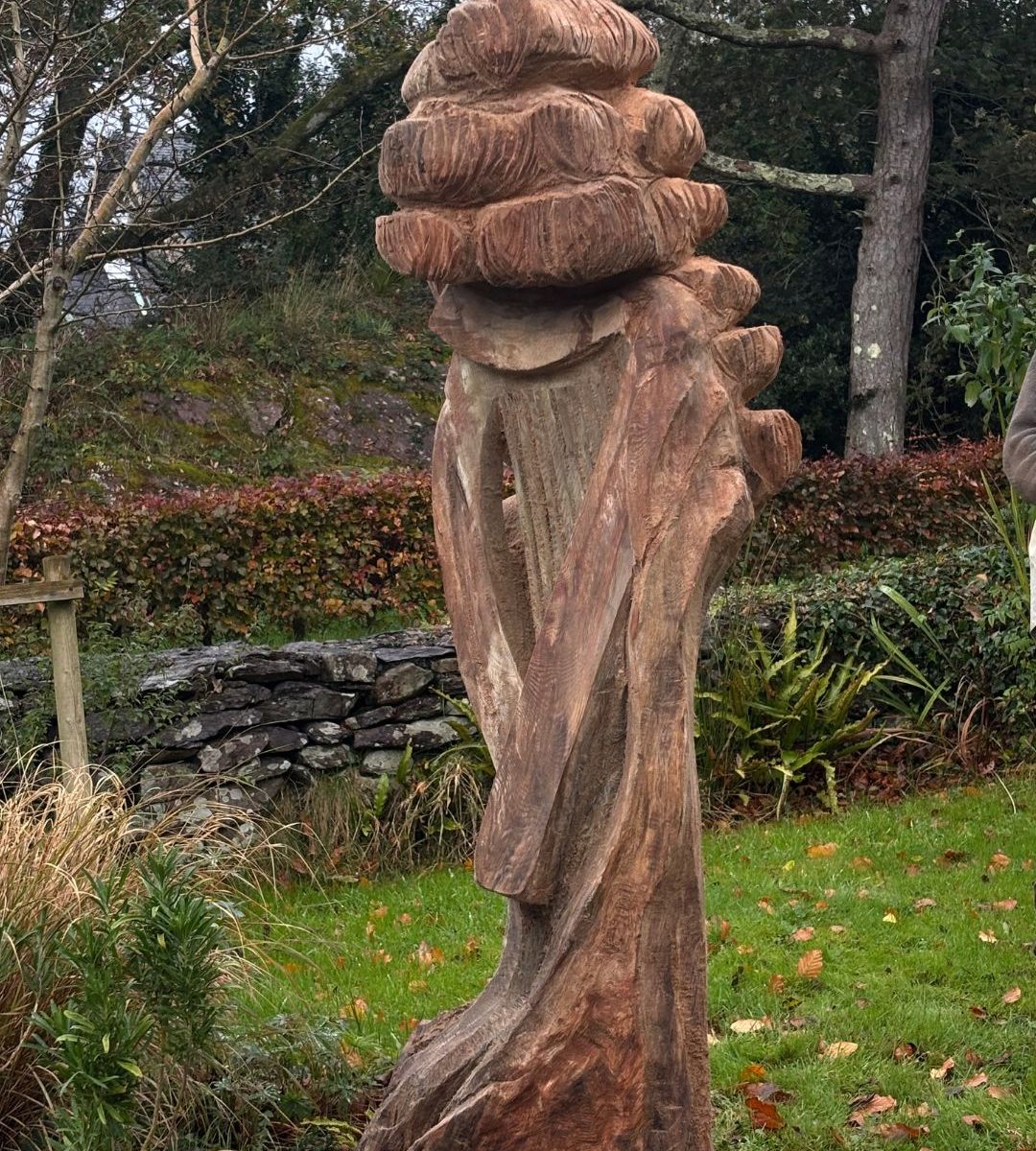Scots Pine (Pinus sylvestris) is one of Ireland’s three native conifers along with Juniper and Yew. Pollen found in soil samples indicate the existence of Scots Pine forests in Ireland 9,500 years ago following glacial retreat. We can estimate it has thrived two or three times since the last ice age in land which is now blanket bog.
In past centuries of changing climates these wetlands would have undergone dry periods sufficient for forests to thrive. When rainfall increased and these forests succumbed to wetlands once more certain more durable woods didn’t decay and instead remained preserved in the anaerobic environment of the bog. This results in the particular bog preserved wood often found today such as bog oak, bog yew and in the case of Scots Pine: bog deal the wood this sculpture has been wrought from. Scots Pine has proven to be a useful resource as it provides long straight trunks for building; often used as roof timbers, lintels or beams. A characteristic that sets Scots Pine aside is its resonance and it has historically been used as the soundboard for harps.
In addition to this bog deal was used to craft ropes, a time consuming process that begins with probing areas of bog to search for suitable wood. This would be found early in the morning looking for the areas in which the dew disappeared from first, signifying bog wood below. The bog deal would then be shredded and beaten down into separate flexible fibres. These fibres would then be twisted into a strong two-ply rope capable of anchoring boats. A sample of this bog deal rope was found here in Sneem.
Standing tall and steadfast in Sneem’s Garden of the Senses, the Scots Pine Ogham Sculpture is inspired by a tree of deep resonance, both in nature and in spirit. In the ancient Ogham alphabet, the Scots Pine is associated with clarity and vision. The Scots Pine holds a special connection to music and craft. Historically, this tree was revered as a musical wood, its fine, resonant grain made it a favoured choice for the soundboards of Irish harps. In this way, the pine’s voice has echoed through centuries of song, its timber carrying the melodies of Ireland’s cultural heritage.
The second addition to the Ogham Trail, unveiled in the Garden of the Senses, honours this connection between tree, sound, and art. Created by Adrian Caudwell and Ella Allison, the sculpture was crafted using Scots Pine bog deal, ancient pine wood preserved for millennia in the boglands of Ireland. This material, steeped in time and transformation, lends a remarkable depth and texture to the piece. The artists chose to incorporate a harp motif into the design, a tribute to the tree’s musical legacy and to the enduring harmonies between nature and creativity.


